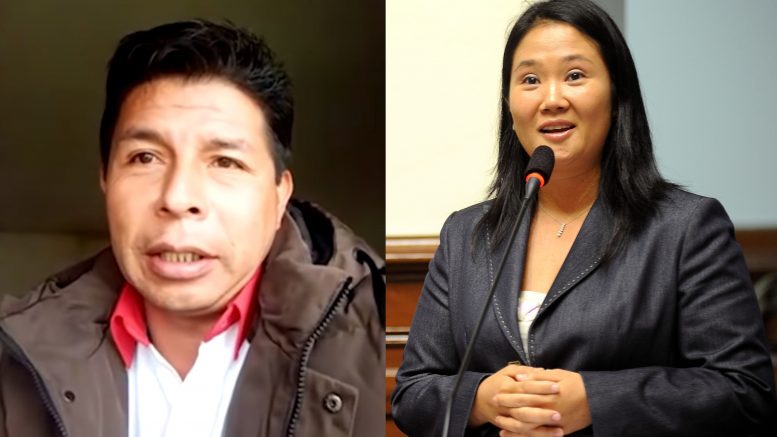The Northern Miner’s second-quarter Global Mining Symposium in mid-May was a great success, with 1,432 delegates tuning in from 86 countries. In this issue we cover the conference’s keynote speakers, Jake Klein of Evolution Mining and David Garofalo of Gold Royalty.
Over the last year and a half, Klein has expanded the Australian gold miner’s footprint overseas, with two large acquisitions in Canada — the Red Lake mine complex in Ontario last year and Battle North Gold earlier this year. (Battle North’s Bateman gold project is within trucking distance of Evolution’s Red Lake mine.) Garofalo has been hard at work too, switching gears from executive roles at pure play mining companies into the royalty and streaming space. He took Gold Royalty public in March raising US$90 million and the company has 18 net smelter return royalties covering 12 projects in the Americas.
Speaking of the Americas, this issue’s special focus is on South America, a continent that offers sweet mineral riches but sometimes serves them up with a sour side-dish of political risk. Santiago-based freelance contributor Tom Azzopardi weighs in on Peru’s upcoming presidential elections on June 6. Front-runners Keiko Fujimori and Pedro Castillo couldn’t be any more different. Keiko, the daughter of Peru’s former authoritarian president Alberto Fujimori, who is now in jail on human rights abuses and graft, has run for president twice and failed (2011 and 2016). Castillo, a hard-left candidate, union activist and former school teacher from the provinces, has been ahead of her in recent polls.
Fujimori is described as a centre-right politician, who also happens to be the subject of a criminal investigation herself (money-laundering charges she denies). She has vowed to crackdown on crime, pardon her father, and is supportive of the extractive industries. “Keiko Fujimori has suggested were she to win, her government would provide support for mining projects in the country, including those that have been delayed by community resistance such as Southern Copper’s Tia Maria,” Colin Hamilton, a London-based commodities analyst at BMO Capital Markets commented in a May 21 research note. “Moreover, the time line and consultation process for approving projects would also be shortened, while 40% of the revenues received from mining would be paid directly into personal bank accounts in local communities. This is a slightly different approach from the rival candidate Pedro Castillo, who is looking to raise taxes on mines.”
‘Slightly different’ approach might be an understatement. Some Peru watchers warn that if Castillo wins, a “leftist dictatorship” would consolidate power and unravel the last thirty years of the country’s free-market policies. Mary Anastasia O’Grady, an editor at The Wall Street Journal and a member of the conservative newspaper’s editorial board, writes that “Castillo’s thinking is frighteningly similar to that of the late Hugo Chavez who ruled Venezuela from 1999 until his death in 2013. … Mr. Castillo has begun to moderate his speech from time to time. But his ‘government plan’ makes no secret of his admiration for Chavez’s ideals and for tyrants like Cuba’s Castro brothers, Nicaragua’s Daniel Ortega, Bolivia’s Evo Morales and Argentina’s Cristina Kirchner. According to his ideology, state ownership of key parts of the economy is necessary to ensure a just society. He has warned multinationals that their days in Peru are numbered.”
And with Peru’s economy devastated by the pandemic (it contracted by 11% last year) and one of the highest death rates from the coronavirus, she wrote on May 2 (“Will Peru Get on the Marxist Path”), “Peruvians are particularly vulnerable to demagoguery at the moment.” The question, she says, is will voters choose Fujimori as the better of two unattractive options. “Like most Peruvian politicians, Ms. Fujimori is dogged by corruption allegations. She has a faithful following but also high negatives. Her fate now hangs on whether voters who dislike her will hold their noses and pull the lever for her because a Castillo presidency is unthinkable.”
Meanwhile, the coronavirus pandemic continues to ravage economies across South America and push hospitals to the brink. Colombia, under conservative President Ivan Duque, has been recently engulfed in violent protests set-off by unemployment and economic hardship due to Covid-19 (the economy contracted 6.8% last year) and a government announcement in late April that taxes would be raised on the middle class (the proposal was later withdrawn); Venezuelans continue to migrate across borders trying to escape economic hardship at home; and in April, Ecuador, whose economy contracted 7.5% last year, elected a conservative former banker, Guillermo Lasso, as its next president, defeating leftist economist Andres Arauz. It was the third attempt for the pro-business Lasso, who is also a member of Opus Dei, a conservative Roman Catholic organization. Meanwhile, Argentina’s ruling coalition has struggled for months to negotiate a new deal with the International Monetary Fund to restructure US$45 billion in debt.
Across the border in Chile, which produces about one third of the world’s copper, workers at BHP’s Escondida and Spence copper mines have gone out on strike; uncertainty reigns as the government weighs changes to the tax and royalty regime for copper mines; and the country works on a new Constitution. As Bank of America put it in a May 21 research note: “there are investor concerns about evolving resource nationalism in Chile that could see higher tax rates implemented for the industry. We don’t think this uncertainty will lead management teams to “hurry up” and approve projects.” And worries about copper supply continue unabated. The investment bank also estimated that Codelco, which produces about a third of Chile’s copper, will need to spend US$35 billion between now and 2030 just “to keep output flat at about 1.6-1.7 million tonnes per annum.”


Be the first to comment on "Balancing risk and reward in South America"